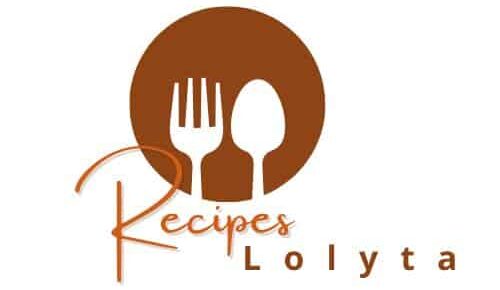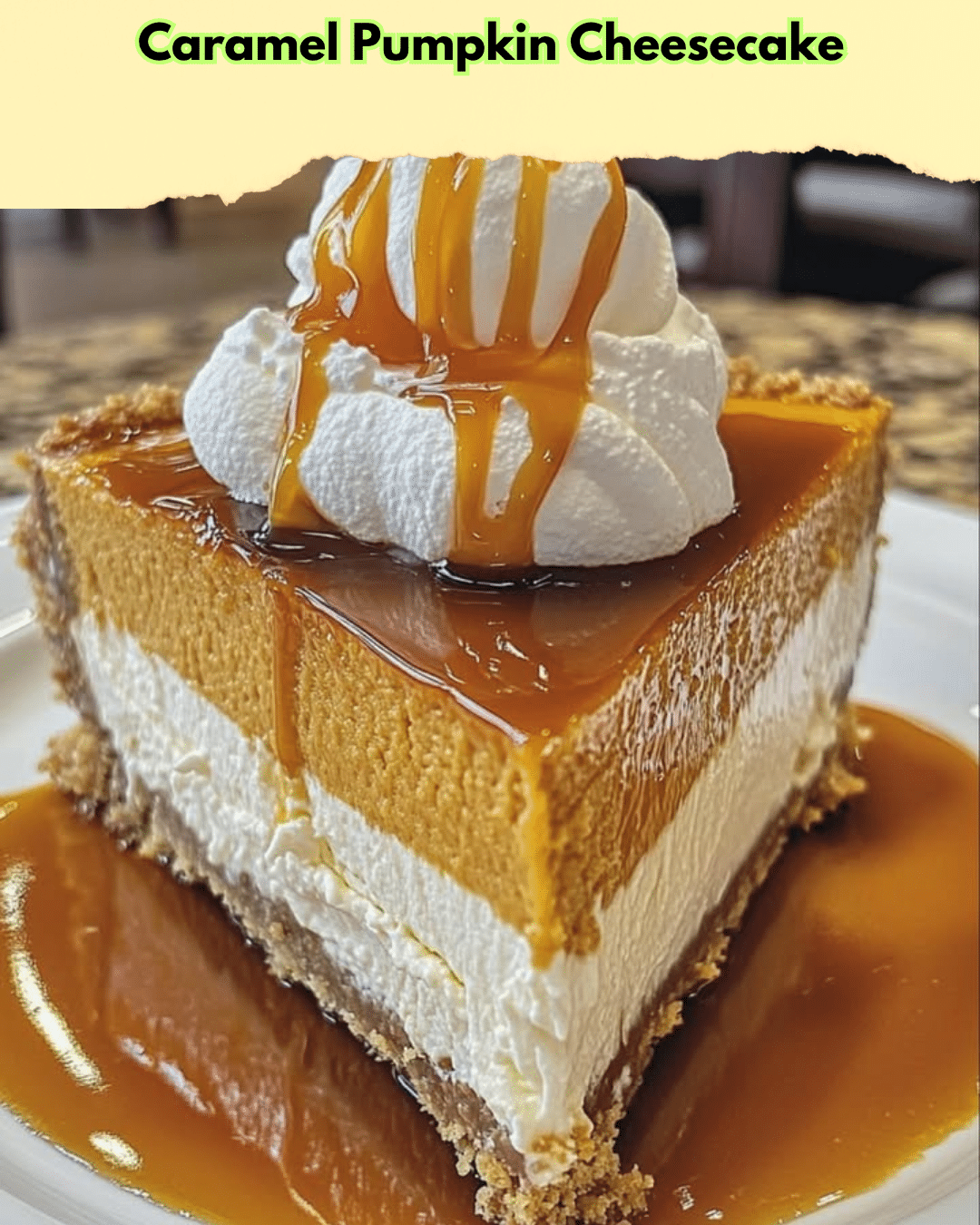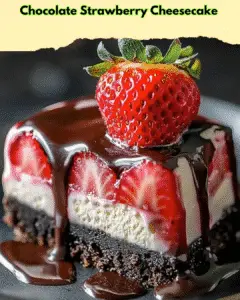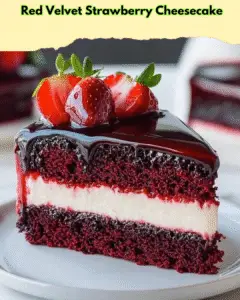Caramel Pumpkin Cheesecake: A Delicious Autumn Delight
With the warm spices of fall and the creamy richness of cream cheese, Caramel Pumpkin Cheesecake is the quintessential autumn dessert. Perfect for cozy gatherings and holiday celebrations, this cheesecake marries the tangy notes of traditional cheesecake with the sweet and spiced flavors of pumpkin pie. Topped with a decadent caramel sauce, each slice offers a harmonious blend of delightfully rich flavors and smooth textures.
Let’s explore why this caramel pumpkin cheesecake will steal the spotlight at your next event. Imagine a silky-smooth pumpkin filling layered over a buttery graham cracker crust. The aroma of cinnamon, nutmeg, and cloves fills your kitchen as it bakes to perfection. Once you top it off with luscious caramel drizzle, it becomes a visual masterpiece that’s as pleasing to the eyes as it is to the palate.
Quick Recipe Highlights
- Flavor Profile: This dessert combines the creamy tang of traditional cheesecake with the warm, spiced sweetness of pumpkin pie, all swirled with rich caramel.
- Texture: A delightful contrast between the creamy pumpkin layer and the crumbly graham crust, finished with smooth caramel topping.
- Aroma: Notes of autumn spices mingle with the decadent richness of caramel, creating an inviting fragrance.
- Visual Appeal: A golden-brown crust with a vibrant orange pumpkin layer, topped with glossy caramel, makes for an enticing presentation.
- Skill Level Needed: Basic baking skills are required, but careful attention to detail will ensure success.
- Special Equipment: A springform pan is essential for easy removal of the cheesecake, and a mixer will help achieve a smooth batter.
Recipe Overview
- Difficulty Level: This recipe is medium difficulty, as it requires careful attention to the baking process and the timing of ingredients to achieve the perfect result.
- Category: Best categorized under desserts, this cheesecake elevates any meal with its rich and indulgent flavors.
- Cuisine: Drawing on classic American desserts, this cheesecake incorporates traditional fall spices that reflect American holiday traditions.
- Cost: Ingredients are mostly pantry staples, with the dessert remaining affordable while exuding luxury and indulgence.
- Season: Ideal for autumn, especially around Thanksgiving and Halloween, when pumpkin flavors are most appreciated.
- Occasion: Perfect for holidays or intimate gatherings, this cheesecake is a show-stopper that complements any festive table.
Why You’ll Love This Recipe
Taste and texture appeal blend beautifully in this Caramel Pumpkin Cheesecake. One bite reveals layers of taste; the base offers a crunchy graham cracker experience, which perfectly complements the creamy, dreamy pumpkin filling. The divine caramel topping not only adds sweetness but a slight stickiness that intrigues every mouthful.
From a convenience standpoint, this cheesecake can be prepared in advance, reducing last-minute stress when guests arrive. Many components can be made separately and combined before serving, making it a dream for pre-event planning.
Nutritionally, this dessert might be a bit indulgent, but pumpkin offers a natural dose of vitamins and fiber, allowing you to enjoy it guilt-free. The few rich ingredients can be balanced with healthier ones, such as low-fat cream cheese or reduced-sugar caramel.
The social aspect of this cheesecake cannot be overstated. It’s a conversation starter, a showpiece, and an absolute delight to share. Its elegant appearance makes it a perfect centerpiece, while its taste ensures that it will be remembered.
Reflecting on cost-effectiveness, sourcing ingredients is straightforward; local markets or grocery stores stock everything you need. Plus, making such a high-impact dessert at home is far more economical than purchasing a similar treat from a bakery.
Historical Background and Cultural Significance
Delving into the origins, cheesecake is a dessert with ancient roots dating back to Greece and Rome. Its transformation over the centuries saw regional adaptations, leading to the creation of cultural icons like New York cheesecake.
The integration of pumpkin in American cuisine arose from Native American influence, with settlers incorporating the vegetable into their autumn feasts. Over time, they developed pumpkin’s use in pies and eventually cheesecakes, resonating particularly during fall.
As cheesecakes evolved, creative iterations like pumpkin cheesecake gained popularity in American bakeries and home kitchens in the mid-20th century. This reflects broader cultural fusion trends, blending familiar flavors in innovative ways.
Modern regional variations may emphasize ingredients native to specific areas, such as adding pecans in the South or using maple syrup in the Northeast, showcasing this dessert’s adaptability and cultural reach.
Ingredient Deep Dive
Pumpkin, a staple of fall cuisine, is not only a symbol of harvest but an incredible source of nutrients such as vitamin A, potassium, and fiber, supporting eye and heart health. Selecting canned pure pumpkin puree simplifies the process without compromising taste, but ensure that it’s 100% pumpkin, not mixed with spice or sweeteners. Store any unused puree in an airtight container in the fridge for up to a week or freeze it in portions for future recipes.
Cream cheese forms the velvety base of our cheesecake, providing that essential tang. The history of cream cheese dates back to the U.S. in the late 1800s, becoming a foundational element in modern cheesecakes. Opt for full-fat versions for the richest taste. Keep it refrigerated and use it within the expiry date. If unavailable, mascarpone can serve as a substitute although it will lend a slightly different texture.
Common Mistakes to Avoid
- Overmixing the cheesecake batter can introduce excess air, leading to cracks on top; aim for a smooth mixture by mixing just until incorporated.
- Not using room temperature ingredients can result in uneven texture and clumps in the final product.
- An underbaked crust can be soggy; prebake it properly to ensure it’s firm and crisp.
- Skipping the water bath when baking will cause dryness and cracking; the additional moisture is crucial for even baking.
- Using canned pumpkin pie mix will alter the flavor, adding unexpected spices and sweetness; stick with pure pumpkin puree.
- Unexpectedly opening the oven door during baking can cause temperature fluctuations leading to uneven baking and cracking.
- Rushing the cooling process by placing the hot cheesecake directly in the fridge can lead to moisture retention and cracking.
- Skipping the chilling phase results in a runny cheesecake filling; patience here rewards with improved texture and flavor.
Essential Techniques
Mastering the art of a water bath is vital for successful cheesecake baking. This technique ensures gentle, even heat distribution, preventing the common pitfall of surface cracks. Set your springform pan within a larger pan filled with hot water, maintaining an inch of water along the sides. Be wary of splashing when placing it in the oven.
Ensuring all ingredients are at room temperature before mixing significantly impacts texture. Cold ingredients can fail to emulsify properly, leading to lumps in the batter. Plan ahead by setting out ingredients about an hour before starting your baking journey. Visual cues for success include a cohesive, uniformly smooth batter that gently flows off your mixing spoon without resistance.
Pro Tips for Perfect Caramel Pumpkin Cheesecake
For an enhanced crust, consider adding a pinch of nutmeg or ginger to the graham crackers for a subtle spice complexity. Adding just a touch of salt will balance the sweetness of the caramel topping beautifully.
Incorporate a tablespoon or two of bourbon into the pumpkin filling. This addition emphasizes the warm, spiced flavors, offering a sophisticated depth without overpowering.
When cooling your cheesecake, use an inverted pie pan or small bowl to lift it from direct contact with the surface. This allows even air circulation, reducing the risk of condensation forming on top.
Patience is essential for chilling. Allow the cheesecake to rest overnight; the flavors meld, and the texture becomes more luxurious.
Consider making your own caramel sauce for a personal touch. Control sweetness and flavor by adjusting ingredients to your liking, such as incorporating sea salt for a salted caramel twist.
Variations and Adaptations
For regional variations, play with locally sourced spices; try incorporating chili powder for a subtle warmth if you enjoy heat. Consider using almond or hazelnut crusts to mirror local nut specialties.
Incorporate local seasonality by adjusting spices according to the time of year. Increase cinnamon in autumn and ginger for winter warmth. Lightly spiced spring versions might omit heavier spices for a fresher palate.
Adapting for dietary needs? Opt for a gluten-free crust by using almond or coconut flour. For a lower-carb approach, consider using erythritol as a sweetener in both filling and crust components.
For flavor variations, swirl in a fruit puree, such as raspberry or cherry, for a fresh contrast against the creamy base. Swapping out caramel for chocolate ganache introduces a delightful richness.
For texture, augment the crust by adding a layer of chopped nuts for an added crunch. Alternatively, fold in whipped cream for a lighter, airier cheesecake version for summer.
Serving and Presentation Guide
When plating your Caramel Pumpkin Cheesecake, consider splattering the plate with caramel sauce artistically for a modern visual appeal. The glossy, smooth surface of the cheesecake contrasts elegantly with rustic garnishments such as cinnamon sticks or star anise.
Garnishing with a dollop of fresh whipped cream adds both a lovely visual element and a delightful contrast to rich pumpkin flavors.
This cheesecake pairs wonderfully with traditional accompaniments like a cinnamon latte or, for an afternoon dessert, pair it with apple cider or pumpkin-spiced drinks.
To modernize the serving, consider a dessert cocktail pairing such as a maple whiskey sour, allowing each flavor profile to enhance the other’s depth and sweetness.
Ensure the cheesecake is served slightly chilled; the caramel will remain soft and spreadable while the cheesecake stays firm. Maintain portion control by slicing even wedges, providing diners with an alluring, tangible measure of indulgence.
Wine and Beverage Pairing
Selecting the right wine can elevate your cheesecake experience. A late-harvest Riesling or Sauternes, with their honeyed notes, pair beautifully with the pumpkin and caramel. Their acidity cuts through the richness, offering balance.
Non-alcoholic options such as spicy chai or a toasted marshmallow-flavored coffee provide cozy, comforting interactions with the dessert’s flavors.
For those who prefer tea, a spiced rooibos or chai blend harmonizes well when served warm. In contrast, cooler months beg for a hot option to cozy up the experience.
Ensure beverages are served at optimal temperatures – for wines, slightly chilled enhances their aromatic qualities, while hot beverages should be warm enough to provide contrast.
Suggest serving smaller tasters of different beverages with each slice, allowing guests to discover their personal pairing preference and engage in interactive tasting discussions.
Storage and Shelf Life
Proper storage ensures your cheesecake retains its flavor and texture for days. Store it in an airtight container in the refrigerator for up to 5 days. Consider separating slices with parchment paper to prevent sticking.
Cheesecake benefits from being cold during storage but return to room temperature around 15 minutes before serving to allow flavors to bloom.
Reheat caramel sauce separately, gently warming it over a low temperature, being careful not to boil, to maintain a smooth consistency.
Freezing the cheesecake is an option, maintaining quality for up to 3 months when properly wrapped in plastic film and foil. Thaw overnight in the refrigerator before serving.
Monitor for spoilage by checking for any developing off-odors or discoloration; trust your senses when evaluating shelf life just as much as the calendar.
Make Ahead Strategies
Utilize a prep timeline to streamline the process. Prepare the crust and filling the day before serving, baking it in the afternoon to allow overnight chilling.
Between steps, keep fillings or toppings chilled if not immediately using them to preserve freshness. Before assembly, allow components to reach a cohesive temperature to ease construction and integrate flavors seamlessly.
Expertly reheating caramel involves gentle stirring over a low flame to preserve its smooth, shiny texture. For optimal quality, incorporate fresh garnishes or toppings only just before serving, keeping the cheesecake beautifully presented and maximized in flavor and appeal.
Prepare holiday components well in advance, ensuring no close contact with steam or moisture to keep all elements crisp and ready for assembly.
Scaling Instructions
Halving the recipe is perfect for smaller gatherings, doing so without losing quality or texture. Use a smaller springform pan to achieve the appropriate depth and visual appearance.
Doubling or tripling can scale beautifully but adjust equipment accordingly; larger pans or multiple smaller ones will maintain structural integrity and facilitate even baking.
Maintain consistency in timing modifications by monitoring the cheesecake’s visual doneness; check for a slight jiggle in the center, indicating set without being overbaked.
Storage considerations include ensuring racks can support doubled recipes effectively without crowding. Allow for additional chilling time for larger quantities.
Nutritional Deep Dive
Each slice of Caramel Pumpkin Cheesecake offers a balance of macronutrients, with carbohydrates from the crust and pumpkin, fats from cream cheese and butter, and a moderate protein content.
Micronutrients abound from pumpkin providing an ample source of vitamin A. Additionally, spices such as cinnamon offer metabolic enhancements and subtle health benefits.
The health benefits of moderate portions can be significant; the indulgence draws from familiar flavors providing both physical and emotional satisfaction.
Create awareness of potential, providing nutritional information for those counting macros or managing dietary decisions, given the energetic density of this type of dessert.
Considering weight management, encourage smaller, balanced portioning, mindful eating to savor the flavors enhancing satisfaction without overindulgence.
Dietary Adaptations
For gluten-free adaptations, almond flour or gluten-free biscuit crumbs create a sturdy, flavorful crust while maintaining a nutrient-dense profile.
To make the recipe dairy-free, use plant-based cream cheeses and substitutes for the caramel and butter, such as coconut or almond milk alternatives.
For vegan preparations, employ a tofu base for the filling, and vegan butter alternatives in the crust, preserving the texture without reliance on animal products.
Low-carb adaptations can be as simple as using erythritol in place of sugar and almond or coconut flour for the crust, achieving a dessert fit for ketogenic or diabetic maintenance.
For those pursuing a keto lifestyle, emphasize fats by introducing nut-based crust components and cream-heavy fillings, ensuring minimal carbohydrates align with dietary needs.
Low-FODMAP versions omit onions, garlic oils, and adjust spice components accordingly while maintaining core profiles for sensitive digestive systems.
Troubleshooting Guide
Handling texture issues requires understanding mixing techniques and ingredient temperatures; combine them thoroughly but avoid excessive whipping to prevent air incorporation.
For flavor balance, consider fine-tuning sugar and spice quantities; adjusting cinnamon or vanilla can amplify muted flavors without overly sweetening.
Temperature fluctuations during baking or testing can be avoided by monitoring with an oven thermometer for consistent bakes, eliminating sudden variations that can impact consistency.
Equipment challenges, such as improper pans or mixing tools, necessitate checking components fit, allowing planned even baking, and mixing efficiency.
Ingredient substitutions should be approached with awareness of density and moisture contents, ensuring swaps maintain taste profiles and textures as intended.
Timing concerns often arise from miscalculations or distractions; set timers for every stage, reinforcing a seamless procedural flow preventing mishaps.
Recipe Success Stories
Delighted community members often share their unique creative twists, like adding a sprinkle of sea salt atop the caramel, highlighting both sweet and savory aspects beautifully.
The adaptability of the recipe allows readers to incorporate local favorites, like burnt sugar swirled on top for added crunch, which personalized the creations.
Reader feedback praises the methodical approach to caramel-making; with the recipe emphasizing precision, deviations led to stunning contrasting textures on top.
Photographs widely celebrated in our community showcase individual touches, such as autumnal garnishes, evoking seasonal beauty paired with an invitingly decadent dessert.
Adaptation stories illustrate international influences; using local spices and substituting regional crust components offer insight into global culinary integration.
Frequently Asked Questions
While the caramel adds depth and sweetness that enhances overall flavor, the cheesecake can be enjoyed without it. If you’re avoiding extra sugar, consider a light dusting of cinnamon or nutmeg instead.
Can I use fresh pumpkin instead of canned pumpkin puree?
Absolutely. Fresh pumpkin requires precooking and thorough mashing until smooth to replace canned puree, but this can enhance the natural taste and texture when done right.
Can I make this cheesecake ahead of time?
Yes, it’s a perfect make-ahead dessert! Prepare it the day before you intend to serve it, allowing ample time for flavors to develop and the cheesecake to reach the perfect firmness.
What should I do if my cheesecake cracks?
Don’t worry! A cracked cheesecake is primarily an aesthetic issue. Simply cover the cracks with caramel or a bit of whipped cream to conceal them, without affecting the taste at all.
How do I prevent my crust from becoming soggy?
Prebaking the crust establishes a firm base. Ensure sufficient baking time and, if necessary, chill completely before adding filling to prevent sogginess.
Why does my cheesecake taste too tart?
Too much acidic ingredient or expired cream cheese may yield excessive tartness. Balance with a touch more sweetener or vanilla essence when mixing.
Can I flavor the caramel?
Absolutely! Consider infusing the caramel with sea salt, chocolate, or spiced elements like cinnamon sticks for a distinctive personalized twist.
Is it okay to freeze the pumpkin cheesecake?
Indeed, freezing is encouraged if wrapped carefully to maintain flavors and textures. Thaw in the fridge gradually for best results.
What’s the best way to slice cheesecake?
Use a hot, wet knife, cleaned between cuts. This simple technique ensures clean, smooth slices every time, showcasing the beautiful layers.
How do I make the cheesecake firmer?
Use full-fat cream components, ensure proper baking, and allow it to fully chill for comprehensive setting that firms up the texture nicely.
Additional Resources
Dive deeper into dessert mastery by exploring related recipes that can expand your knowledge of flavor profiling and dessert composition. Consider joining cheesecake forums offering technique insights.
Technique-specific guides, such as those focused on perfecting caramel sauce or creating diverse spice blends, bolster your baking repertoire with detailed tricks.
Ingredient information such as sourcing superior-quality pumpkins and spices enhances flavor outcomes, establishing reliable pantry staples.
Curate a selection of recommended equipment pieces that ensure successful outcomes, from reliable springform pans to hand mixers essential for consistency.
Explore seasonal variations by experimenting with spices or ingredients reflective of seasons; engage with other communities sharing time-tested adaptations ensuring your cheesecake remains exciting year-round.
Print
Caramel Pumpkin Cheesecake
Description
A rich and creamy cheesecake with a flavorful pumpkin twist, topped with a luscious caramel sauce.
Ingredients
For the Crust:
- 1 cup graham cracker crumbs
- 1/4 cup melted butter
- 3 packages (8 ounces each) cream cheese, softened
- 1 cup granulated sugar
- 1 teaspoon vanilla extract
- 3 large eggs
- 1 cup pumpkin puree
- 1 teaspoon ground cinnamon
- 1/2 teaspoon ground nutmeg
- 1/4 teaspoon ground ginger
- Caramel sauce for topping
Instructions
1. Prepare the Crust:
- Preheat oven to 325°F (160°C). Mix graham cracker crumbs and melted butter. Press into the bottom of a 9-inch springform pan.
- In a large bowl, beat cream cheese, sugar, and vanilla until smooth. Add eggs one at a time, beating after each addition. Mix in pumpkin puree and spices until well combined.
- Pour the cheesecake mixture over the crust. Bake for 45-50 minutes or until the center is set. Cool and refrigerate for at least 4 hours. Drizzle with caramel sauce before serving.
Notes
You can customize the seasonings to taste.




